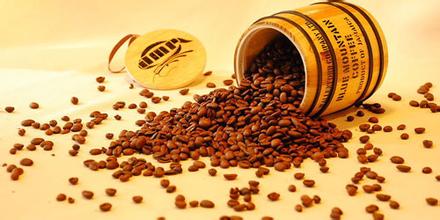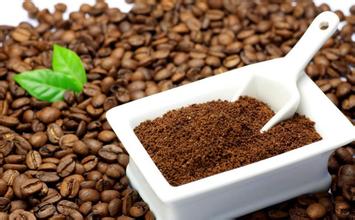Brazilian Coffee harvesting and processing capacity-effect of Brazilian Weather on Coffee
Brazilian Coffee harvesting and processing capacity-effect of Brazilian Weather on Coffee
The vigorous production period of a coffee tree usually lasts about 15 years, and of course some trees are still fruitful for 20 or 30 years. As soon as the coffee tree loses its ability to bear fruit, it will be cut down on the spot and uprooted so as not to compete for nutrients with other trees that are still strong and can bear fruit. Coffee production is related to the species and growing environment of coffee trees. a coffee tree can produce an average of 5 pounds of coffee fruit a year and eventually harvest about 1 pound of dried coffee beans.
When the coffee fruit changes from turquoise to full wine red, it shows that it is ripe, but there are also some strange varieties, the ripe coffee fruit appears yellow. The coffee fruit looks like cranberries or cherries, but the shape is closer to the oval. Coffee farmers usually judge whether the coffee fruit is ripe by pinching the coffee fruit with the thumb and index finger. If the coffee bean is squeezed out with a gentle pinch, it proves that the coffee fruit is ripe. The ingredients left in the hand after the coffee beans are squeezed out are red peel and pulp. What is squeezed out is the seed coat and the mucus adhered to it. Inside the seed coat are two coffee seeds wrapped in translucent silver skins.
Brazil Santos NO.2 (BRAZIL SANTOS NO.2)
Because most traditional Brazilian coffee is processed by natural drying (coffee seeds: drying before the pulp is removed), the syrup in the pulp remains in the raw beans, so it has a sweet taste. Brazilian coffee processed in this way is the most common raw bean in boutique coffee stores. Coffee grown on an Arabica coffee tree called Bourbon is also common in Brazil. Among the coffee produced in this way, the best quality coffee is generally referred to as "Santos No.2 (SantosNo2)".
In addition, only those planted on coffee bourbon trees are called "bourbon Santos No.2 (BourbonSantosNo.2)". Santos comes from the name of the port that transports Brazilian coffee. "2" means the highest level of coffee quality. In wholesale circulation, generally remove "2", only known as "Brazil Santos" or "Brazil Bourbon Santos".

Important Notice :
前街咖啡 FrontStreet Coffee has moved to new addredd:
FrontStreet Coffee Address: 315,Donghua East Road,GuangZhou
Tel:020 38364473
- Prev

Flavor description of Sumatra Lindong Coffee Bean Variety introduction of Grinding Calibration method
Description of flavor of Lindong coffee beans in Sumatra Variety introduction Sumatra Lintong Rasuna Lindong Mantenin coffee beans in Sumatra are different in flavor from ordinary Mantenin coffee beans in that they have transparent and exquisite taste, and the common herbs and local flavors of Mantenin coffee beans are not obvious on this coffee bean. La Souna Sumatra Li
- Next

Introduction to the taste of the variety treatment method in the production area of Yejia Fischer coffee beans
Yega Fischer coffee beans grinding scale production area variety treatment taste introduction coffee trees are mostly planted in farmers' own backyard or mixed with other crops in the field, the yield per household is not much, it is a typical pastoral coffee. Yega Xuefei won the prize beans almost from the above-mentioned coffee villages and communities. The so-called Yega Chevy refers to the strong aromas of jasmine, lemon or lime acid, and peach.
Related
- Detailed explanation of Jadeite planting Land in Panamanian Jadeite Manor introduction to the grading system of Jadeite competitive bidding, Red bid, Green bid and Rose Summer
- Story of Coffee planting in Brenka region of Costa Rica Stonehenge Manor anaerobic heavy honey treatment of flavor mouth
- What's on the barrel of Blue Mountain Coffee beans?
- Can American coffee also pull flowers? How to use hot American style to pull out a good-looking pattern?
- Can you make a cold extract with coffee beans? What is the right proportion for cold-extracted coffee formula?
- Indonesian PWN Gold Mandrine Coffee Origin Features Flavor How to Chong? Mandolin coffee is American.
- A brief introduction to the flavor characteristics of Brazilian yellow bourbon coffee beans
- What is the effect of different water quality on the flavor of cold-extracted coffee? What kind of water is best for brewing coffee?
- Why do you think of Rose Summer whenever you mention Panamanian coffee?
- Introduction to the characteristics of authentic blue mountain coffee bean producing areas? What is the CIB Coffee Authority in Jamaica?

